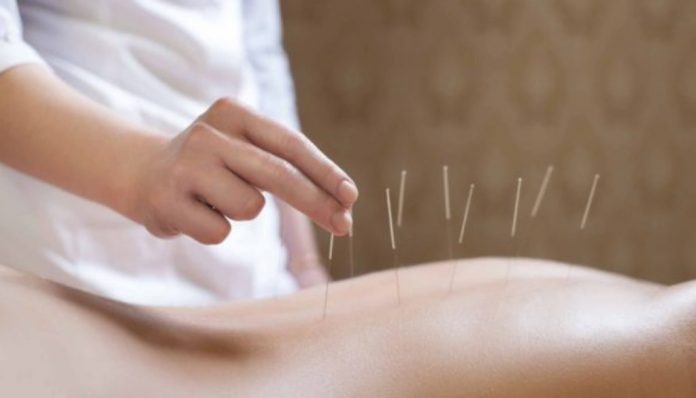Acupuncture which has been around for about 5,000 years may now be a viable part of a treatment plan for women experiencing hot flashes. Yes this ancient practice of inserting needles into specified parts of the body may now used as a replacement for much dread hormone replacement therapies.
Researchers at the University of Pennsylvania treated 120 breast cancer survivors who had previously reported incidences of multiple hot flashes throughout their day. Hot flashes are episodes of extreme warmth spread throughout the upper body and face, rapid heartbeat, red blotchy skin, sweat and a chilled feeling as they subside. The exact reason that women experience hot flashes hasn’t been pinpointed but there are theories. They range from decrease in estrogen to the hypothalamus (your body’s thermostat) which becomes more sensitive to changes in your body temperature.
“Though most people associate hot flashes with menopause, the episodes also affect many breast cancer survivors who have low estrogen levels and often undergo premature menopause, following treatment with chemotherapy or surgery,” lead author Jun J. Mao, MD, MSCE, associate professor of Family Medicine and Community Health has said. “These latest results clearly show promise for managing hot flashes experienced by breast cancer survivors through the use of acupuncture, which in previous studies has also been proven to be an effective treatment for joint pain in this patient population.”
The subjects were randomized into four different groups that used a technique known as electroacupuncture — in which embedded needles deliver weak electrical currents — reduces incidents of hot flashes as compared to the epilepsy drug gabapentin, that had been shown to be effective in decreases hot flashes for these patients. During an eight-week period, participants received gabapentin (900 mg) daily, gabapentin placebo daily, electroacupuncture (twice per week for two weeks, then once weekly), or “sham” electroacupuncture, which involves no actual needle penetration or electrical current.
At the end of the eight-week treatment period, the patients in the electroacupuncture group showed the greatest improvement in hot flash frequency and severity, known as the hot flash composite score (HFCS). They were followed by the group that had received the “sham acupuncture” treatment. The gabapentin pill group reported less improvement than the sham acupuncture group, and the placebo pill group placed last.
Addtionally, both acupuncture groups reported fewer side effects than either of the pill groups.
The Penn researchers then surveyed the participants sixteen weeks after treatment ended, and found that the electroacupuncture and sham electroacupuncture groups had experienced an reduction of their hot flashes. The pill-placebo subjects also reported a mild improvement in symptoms, whereas the gabapentin pill group reported a worsening.
“Acupuncture is an exotic therapy, elicits the patient’s active participation, and involves a greater patient-provider interaction, compared with taking a pill,” Mao has said. “Importantly, the results of this trial show that even sham acupuncture — which is effectively a placebo — is more effective than medications. The placebo effect is often dismissed as noise, but these results suggest we should be taking a closer look at how we can best harness it.”








